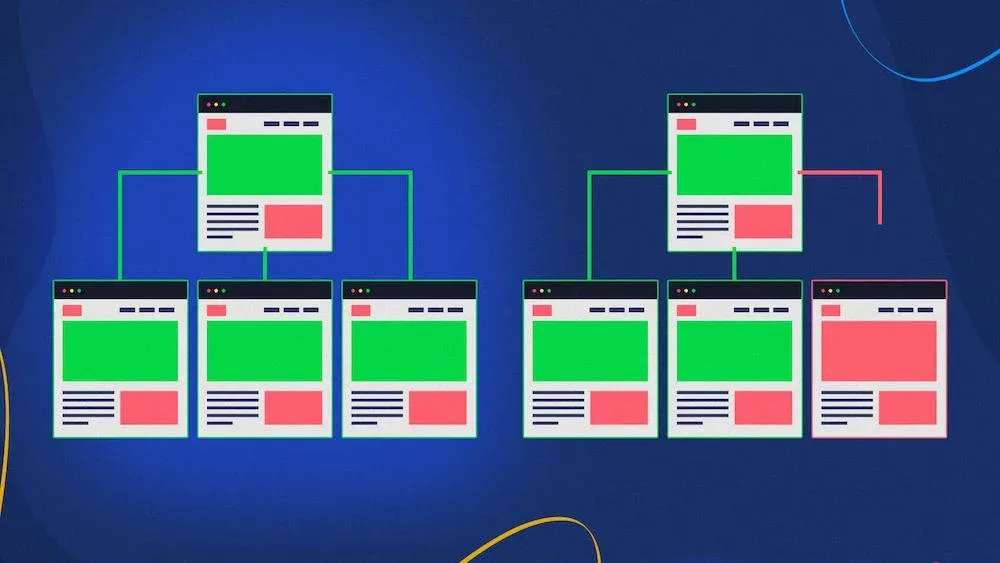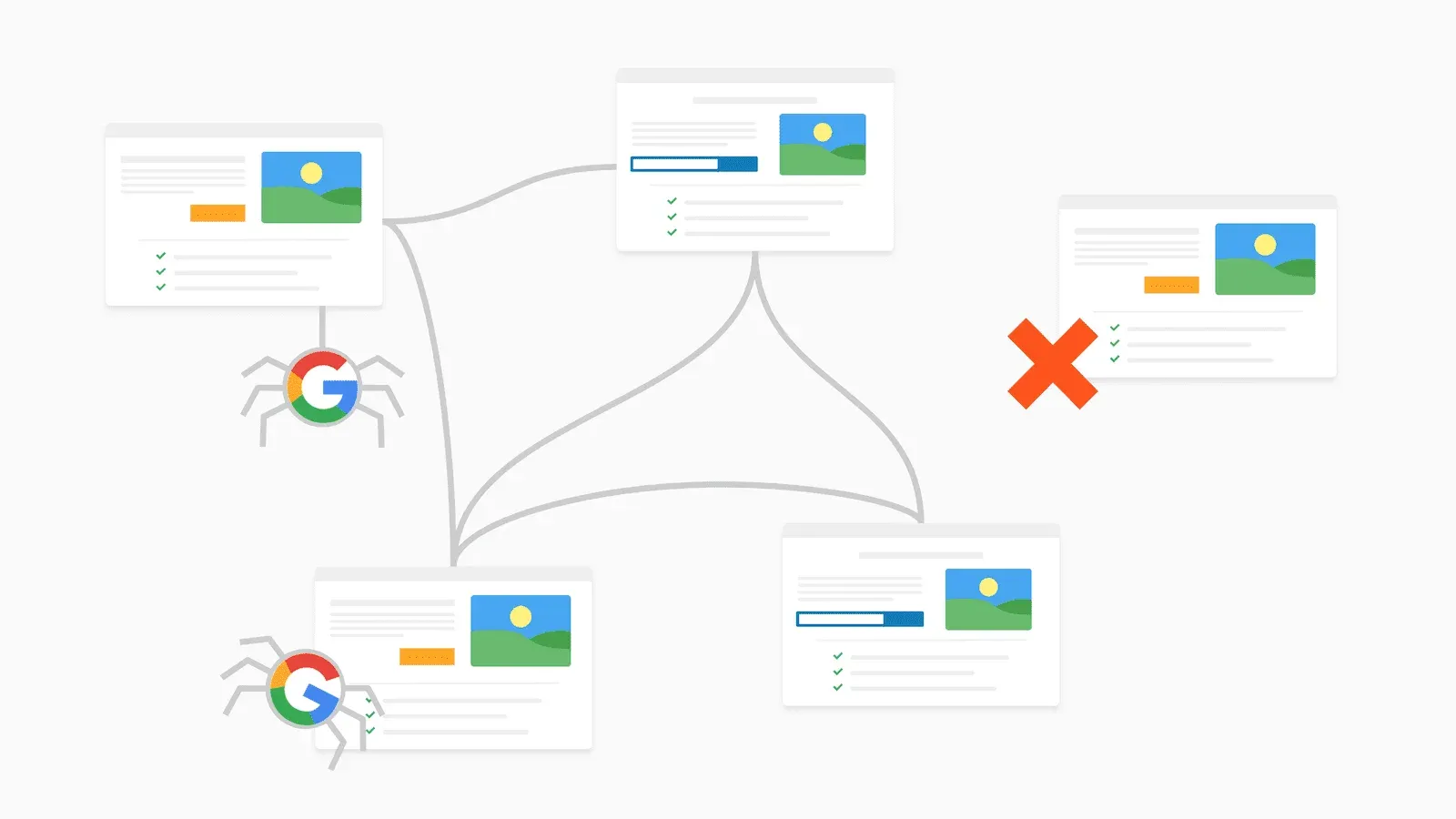Implementing 301 Redirects For Orphan Page Prevention

In website management, it is crucial to regularly review and update content to ensure a smooth user experience and maintain search engine rankings.
One common issue that can arise is the presence of orphan pages—pages on a website that are not linked to any other pages within the site. These orphaned pages can negatively impact both SEO and the user experience.
This is where How To Fix Orphan Pages using 301 redirects come in.
Understanding 301 Redirects
A 301 redirect is a permanent type of redirect that automatically sends users and search engines from one URL to another.
It is used when a webpage's URL has changed permanently and the old URL needs to be redirected to the new one.
Unlike other types of redirects, such as 302 redirects (temporary), 301 redirects pass on the original page's authority and backlinks to the new URL. This means that implementing 301 redirects can preserve SEO value and prevent penalties from search engines.
How to Find Orphan Pages on a Website?

To effectively prevent orphan pages, they must first be identified.
Some methods for identifying orphan pages include manually checking for broken links and using web analytics tools to analyze website traffic. It is essential to identify orphan web pages promptly to avoid potential penalties from search engines and save time and money in the long run.
Tools For Orphan Page Detection
Several tools are available for identifying orphan pages within a website.
These tools can help streamline the process and provide a comprehensive analysis of orphan content.
Using tools like Google Search Console, website crawlers, and other detection methods can help webmasters efficiently identify orphan pages.
Common Causes Of Orphan Pages
There are various reasons why orphan pages may exist on a website. Some common causes include restructuring the site's navigation, outdated orphan page internal links, or orphan content migration without proper redirects set up.
It is vital to understand these common scenarios to effectively prevent and address issues related to finding orphan pages on your website.
Impact On SEO And User Experience
Orphan pages can have a significant impact on both SEO and user experience.
Search engines may interpret orphan content as low-quality or irrelevant, resulting in a decrease in search engine rankings.
Additionally, users may encounter error pages or outdated information, leading to a negative overall experience with the website.
Benefits Of 301 Redirects For Orphan Page Prevention

The use of 301 redirects to prevent orphan pages has several benefits, including preserving SEO value, improving user experience, and maintaining link equity.
Preservation Of SEO Value
When implementing 301 redirects, the original page's SEO value is transferred to the new URL. This includes elements such as page authority, backlinks, and rankings.
Proper preservation of these components can positively impact SEO and maintain the website's overall health.
Improved User Experience
By ensuring seamless navigation for website visitors, 301 redirects greatly enhance user experience.
When a visitor attempts to access outdated content or encounters an error, a properly implemented 301 redirect can guide them to the relevant and updated content they are seeking.
This reduces the likelihood of users bouncing from the website due to failed or unsatisfactory page loads.
So, understanding how to fix orphan pages with 301 redirects is crucial for improving overall user satisfaction and engagement with the site.
Maintenance Of Link Equity
Link equity refers to the value and authority associated with inbound links to a webpage.
301 redirects help maintain this link equity by transferring it to the new URL, ensuring that the website's backlink profile remains strong.
This can have a positive impact on search engine rankings and overall website credibility.
Step-By-Step Guide To Implementing 301 Redirects

Below is a step-by-step guide for implementing 301 redirects effectively:
Audit And Identify Orphan Pages SEO
Conduct a thorough audit of the website to identify any orphan pages SEO problems. This can be done manually by checking for broken links or using web analytics tools.
Understanding the extent and causes of orphan web page is crucial in implementing effective 301 redirects.
Creating A Redirect Map
A redirect map is a list of old URLs that need to be redirected to new ones. It helps maintain a logical URL structure and ensures a smooth transition for both users and search engines.
Proper organization and management of the redirect map are essential for a successful implementation.
Editing The .htaccess File (for Apache Servers)
For websites hosted on an Apache server, the. .htaccess file needs to be edited to add specific redirect rules.
This involves understanding the proper syntax and structure of the file and ensuring that changes are made without causing unintended issues.
Any mistakes in this process could lead to broken links or error pages.
Configuring Redirects In Content Management Systems (CMS)
Popular CMS platforms, like WordPress, provide features for configuring 301 redirects within the system. This can be done using plugins or built-in functions, depending on the specific CMS being used.
It is essential to follow instructions carefully and consider any platform-specific considerations or best practices.
Best Practices And Considerations

When implementing 301 redirects, there are several best practices and considerations to keep in mind.
Use Of Relative Vs. Absolute Paths
Properly choosing between relative and absolute paths is crucial to ensuring consistency in URL structures and maintaining a good user experience.
Understanding the differences between the two and when to use each can help avoid potential issues.
Handling Parameterized URLs
Parameterized URLs, containing dynamic elements like session IDs or search parameters, can be challenging to handle during redirect implementation. It is essential to understand the potential issues and best practices for managing parameters effectively.
This includes configuring redirects to handle parameters intelligently and maintaining a clean URL structure, especially when trying to find orphan pages resulting from parameter variations.
Monitoring And Updating Redirects Over Time
Regularly monitoring and updating 301 redirects is crucial to ensuring they continue to serve their intended purpose.
This involves using tools and techniques for tracking changes in website structure over time, identifying any issues that may arise, and making necessary updates. Setting up alerts or checks can help with efficient and timely monitoring.
Communicating Changes To Search Engines
It is essential to communicate 301 redirects to search engines effectively. This involves submitting updated sitemaps and using tools like Google Search Console to notify them of URL changes.
Clear communication is crucial in ensuring that search engines properly index the new URLs and understand any site structure changes.
Common Mistakes To Avoid

When implementing 301 redirects, there are a few common mistakes that should be avoided.
Incorrect Redirect Types
Choosing the wrong type of redirect, such as a 302 instead of a 301, can lead to negative SEO impacts.
While a 302 redirect is temporary, a 301 redirect is permanent and thus communicates to search engines that the old URL has been permanently replaced by the new one.
This distinction is crucial as search engines transfer the link equity from the old URL to the new one in the case of a 301 redirect, but not with a 302. Consequently, using a 302 redirect when you should use a 301 can result in a loss of link equity, negatively affecting your website's search engine rankings.
Ignoring Mobile Versions
Neglecting to consider mobile versions of a website during redirect implementation can result in a poor user experience for mobile users. It is essential to ensure that redirects are correctly configured for both desktop and mobile versions of the website.
You may need to consider the responsive design and ensure that any mobile-specific URLs are also appropriately redirected.
Neglecting Internal Link Updates
After implementing 301 redirects, it is crucial to orphan page internal links on the website to reflect the new URL structure.
Neglecting this can result in broken internal links and a poor user experience. It can also affect search engine rankings, as search engines may perceive the outdated links as irrelevant or broken.
Forgetting To Update External Links
External links from other websites pointing to your website are essential for SEO.
However, after implementing 301 redirects, these external links may become outdated and point to error pages or old content.
It is crucial to identify and update these external links proactively, ensuring that they continue to contribute positively to your website's SEO.
Identify And Remove Orphaned Content Promptly Today!

Using Linkbot, a powerful tool for identifying and removing orphaned content, can save time and improve accuracy by preventing broken links from affecting page rankings.
Linkbot helps to efficiently identify orphan pages and manage the redirect process, making it a valuable asset for website management.
FAQs About Orphan Page Prevention
What Is An Orphan Page?
An orphan page is a web page that has no links from other pages within the same website, making it inaccessible through internal navigation. It can only be reached if the exact URL is known or through external links.
How Can I Identify Orphan Pages On My Website?
Use tools like Google Search Console and website crawlers to identify pages with no orphan page internal links. Conduct a thorough audit to pinpoint pages without any connections within your site structure.
What's The Difference Between Relative And Absolute Paths In 301 Redirects?
Relative paths are specified relative to the current page, while absolute paths include the full URL. It's crucial to use the appropriate path type to ensure consistent URL structures and avoid issues with link resolution.
How Often Should I Monitor And Update My Redirects?
Regular monitoring is essential. Check for issues, especially after site updates or content changes. Updating redirects promptly ensures they remain effective over time and prevents potential SEO and user experience issues.
How to do an orphan page SEO?
To optimize orphan pages seo, identify and link these isolated pages within your website's internal structure, and ensure their content and metadata are SEO-friendly. This improves their visibility and search engine ranking.
